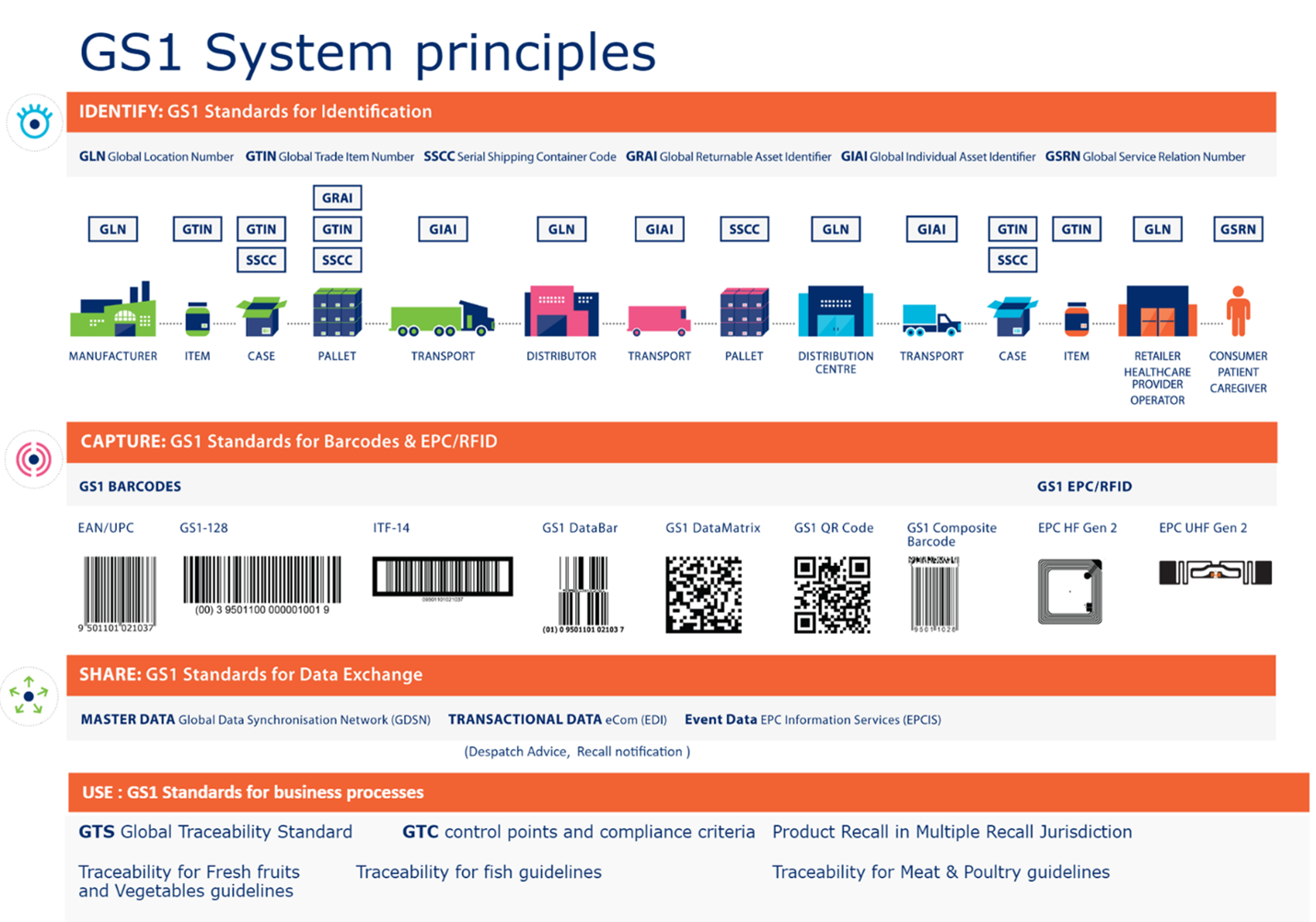GS1 Experience
Author: Ian Cummings, Staff Sales Engineer, Seagull Scientific
My experience:
The summit saw a strong turnout, featuring key figures from the core GS1 organization alongside their affiliates and independent GS1 organizations from across the globe. The event also welcomed a select group of partners and members, including Seagull Scientific.
I had the opportunity to participate in two on-stage sessions focusing on 2D barcoding (GS1 Digital Link) and RFID EPC tags with DSGTIN+ (Date-prioritized Serialized Global Trade Item Number) formatted data. These sessions, which included partners from Avery Dennison and TSC Printronix, went smoothly. I was able to briefly discuss Seagull Scientific and demonstrate the use of BarTender, showcasing how to create and print labels/tags with a GS1 Digital Link QR-Code and EPC RFID tag, incorporating relevant product data. Each session was followed by a brief Q&A session with the audience.
Aside from preparing and presenting these sessions, I had valuable interactions with hardware partners of Seagull, such as Domino, Wipotec, Markem Imaje, and Zebra. Additionally, I attended several sessions as part of the audience, covering a range of topics, all of which were quite engaging and inspired me to further my knowledge through online study.
Key takeaways:
One of the main insights gained was a deeper understanding of the GS1 organization's structure. This includes the core, which primarily focuses on developing and managing standards, as well as the affiliated country-based independent GS1 organizations, which play a crucial role in assisting the industry with correct implementation.
Another key takeaway was realizing the breadth of the GS1 mission, which goes beyond what many BarTender users are familiar with, such as the simple GS1-128 barcode.
The below slide gives a great overview of the GS1 system decoding the processes and technologies involved:

Overview of the GS1 system decoding processes
The core GS1 organization comprises a diverse group of individuals from around the world, each bringing expertise and knowledge to develop and manage these critical standards.
The move towards unique identification at the item level is rapidly becoming a reality, presenting a significant opportunity for us and the AIDC industry as a whole. BarTender is well-positioned to support this transition, as many of the required features are already in place.
One of the highlights of the conference was the discussion around GS1 Digital Link, which is already supported by BarTender. This technology is set to play a crucial role in full supply chain traceability, offering significant value to consumers. It is evident that we are approaching a tipping point where the use of this technology will become increasingly widespread.
It's important to note that GS1 Digital Link serves two main purposes. Firstly, it functions like a traditional GS1 barcode, allowing for on-site reading and parsing without an internet connection, which is essential for logistics operations. Secondly, it provides a standardized method to connect individual items to the internet, linking to either the ID sub-domain of GS1 for item identification or to a third-party resolver for customized product information and full supply chain lifecycle details. This standardized approach will greatly benefit both product manufacturers and consumers.
The push for unique identification is also driving the use of RFID in logistics, particularly with the introduction of the new EPC TDS (Tag Data Standards), which BarTender supports, including the DSGTIN+ data standard. While there have been disagreements on how best to improve these standards, progress is being made as these issues are being resolved, allowing the industry to move forward.
Anything our partners/customers may be interested in knowing more about:
The "White T-Shirt" demonstration at the summit was both intriguing and informative, showcasing how a product's full supply chain history can be shared with consumers through a GS1 Digital Link code. This demonstration is definitely something our partners and customers should explore further.
During the event, I also discovered other valuable standards and resources within GS1's scope. For instance, the GS1 Syntax Library, which BarTender uses for implementing GS1 barcodes, is a useful resource. Additionally, I learned about GS1 EPCIS 2.0, which deals with master, transactional, and event data, providing comprehensive information about products and assets. EPCIS enables the capture and sharing of interoperable information regarding the status, location, movement, and chain of custody of products, locations, and assets.
Although EPCIS is not directly related to BarTender, there is potential for integration in the future, particularly with event data messages. This integration could enhance BarTender's capabilities within an integrated workflow.